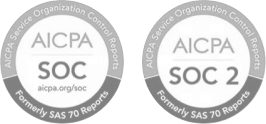Apprenticeship levy
Article Navigation
A UK employer payroll charge introduced in April 2017. It applies to companies with an annual payroll of more than £3 million and is calculated at 0.5 percent of the total paybill. The levy is collected through the PAYE system along with other employment deductions. Employers receive their contributions back in a digital account for funding apprenticeship training. Unused funds expire after 24 months. The digital fund also includes an automatic 10 percent government top up. Employers can use their levy balance to sponsor their own apprentices or share with other eligible organisations in the national apprenticeship system.
Apprenticeship Levy Umbrella Company
An umbrella employer or payroll intermediary authorised to manage apprenticeship levy funds on behalf of multiple organisations. Businesses can collaborate through an umbrella structure to combine levy contributions and fund apprenticeships across a group of companies. The umbrella entity collects levy funds, centralises apprenticeship planning, places apprentices with individual or pooled employer partners, and pays training providers directly. This structure is helpful for small and medium‑sized enterprises unable to generate their own levy funds but still wishing to benefit from apprenticeship schemes. Each umbrella company must register with the Education and Skills Funding Agency and comply with levy rules including tracking digital account balances and sharing funds appropriately.
Using Apprenticeship Levy for Existing Employees
Employers may use levy funds to train existing staff, not only new joiners. This approach helps upskilling and career progression, improves productivity, and can support succession planning. To draw levy monies, the employer must enrol the employee on a formally recognised apprenticeship standard or framework. The content and duration must meet age and skills requirements and usually last at least one year. Employers may combine levy funds with other resources if the training costs exceed digital fund balances. Learning providers must register with the ESFA and align training delivery to the apprenticeship plan recorded in the apprenticeship service portal. Employers must track progress and pay the apprentice’s wage while training is ongoing.
Levy Funded Apprenticeships
Apprenticeships funded through levy accounts are not free; employers have already paid payroll contributions. These programmes address national skills shortages and help businesses build specialist capability. Levy funded apprenticeships typically include on‑ and off‑the‑job training overseen by a registered provider. Employers benefit from an end‑point assessment to confirm competency against occupational standards. Apprentices typically spend 20 percent of their paid time on off‑the‑job learning such as workshops, shadowing, or research. Deliverables are recorded in a training plan and monitored via the apprenticeship service portal. Employers can use digital funds to cover training provider costs, government top up, and support for assessment fees. If the total cost exceeds the available digital levy balance, employers must co‑fund the remainder according to co‑funding rules.
Government Apprenticeship Levy
The government‑mandated contribution mechanism established by Parliament under the Finance Act 2016 to fund apprenticeships across England. It supports national workforce development objectives, addresses skills gaps, and aligns training to local and regional economic needs. Although the levy is mandatory for employers above the threshold, the government incentivises participation through allowances, top ups, sharing mechanisms, and the apprenticeship service platform which improves transparency and efficiency. Levy funds are ring‑fenced solely for apprenticeship training costs and cannot be used for salaries, inductions, or employer overheads. The Department for Education and ESFA administer funds access, provider registration, and compliance with apprenticeship standards. The scheme also sets parameters for transfers between organisations, fund expiry, and eligibility criteria for apprentices and employers alike.
Key Terms and Concepts
- Digital Fund: Each levy‑paying employer receives its contributions in a personalised online account known as a digital fund. It holds levy payments plus government top‑ups. Employers allocate balances to training providers by selecting apprenticeships in the apprenticeship service portal. Funds expire twenty‑four months after deposit and reclaimed thereafter.
- Threshold Pay Bill: The £3 million annual payroll limit is the threshold at which the apprenticeship levy becomes payable. This threshold applies to gross earnings liable to secondary Class 1 National Insurance Contributions. Employers below this threshold do not pay the levy but may still access funding through co‑funded schemes.
- Levy Allowance: All levy‑paying employers receive an annual allowance of £15,000 credited against their digital fund. This effectively exempts the first £3 million of payroll from the levy and means employers only pay 0.5 percent on the excess. Unused allowances within a tax year cannot be carried forward beyond the 24 month expiry window.
- Co‑funding: When a non‑levied employer or non‑levy portion of a framework requires government support, the government contributes 95 percent of training costs and the employer contributes 5 percent (or 0 percent for apprentices aged 16 to 18). This arrangement ensures even smaller employers can offer apprenticeship training.
- Careers Leveling Up: The apprenticeship system aligns with wider government objectives to support social mobility, upskilling adults through career transitions, and regional development. By committing levy funds to existing employees, organisations contribute to ‘levelling up’ local economies and increasing productivity.
- End‑Point Assessment: A mandatory final check that assesses whether an apprentice has attained the full occupational competence required by the apprenticeship standard. Conducted by an independent, registered assessor or assessment organisation, it includes exams, practical demonstrations, or professional discussions.
- Employer Apportionment (Fund Sharing): Levy‑paying employers can voluntarily transfer part of their digital fund to other employers, including smaller business partners and supply chain firms, helping them fund training while facilitating ecosystem collaboration. Up to 25 percent of annual levy funds can be shared per scheme, and transfers must be authorised through the apprenticeship service portal.
- Frameworks and Standards: Apprenticeship frameworks offered simpler, older models combining qualifications, technical knowledge, practical skills, and employment rights. These have been largely replaced by apprenticeship standards which are employer‑designed, outcomes‑focused, and overseen by industry‑led apprenticeship standards bodies. Providers must use approved frameworks or standards to access funding.
- Off‑the‑Job Training: Training that occurs outside of normal day‑to‑day work tasks and takes at least 20 percent of an apprentice’s paid hours. It includes formal learning sessions, shadowing, project work, e‑learning, or research. Employers must record off‑the‑job training hours in the apprenticeship service.
- Provider Registration: Training providers must be registered with the Education and Skills Funding Agency and listed on the apprenticeship service before they can claim levy funds. Registered providers deliver training according to approved standards and comply with review, monitoring, and quality assurance processes.
- Expiry Date: Unused levy funds in the digital account expire 24 months after the month in which they were collected. These reclaimed balances are redistributed and may support national apprenticeship programmes. Employers must plan apprentice starts accordingly.































 Back
Back